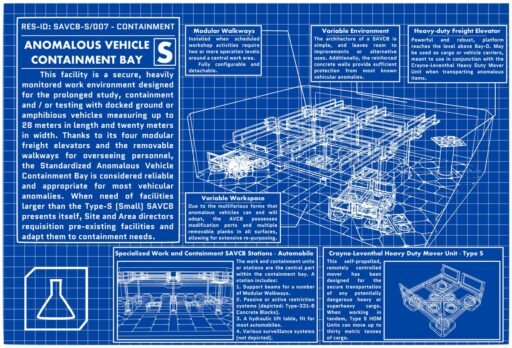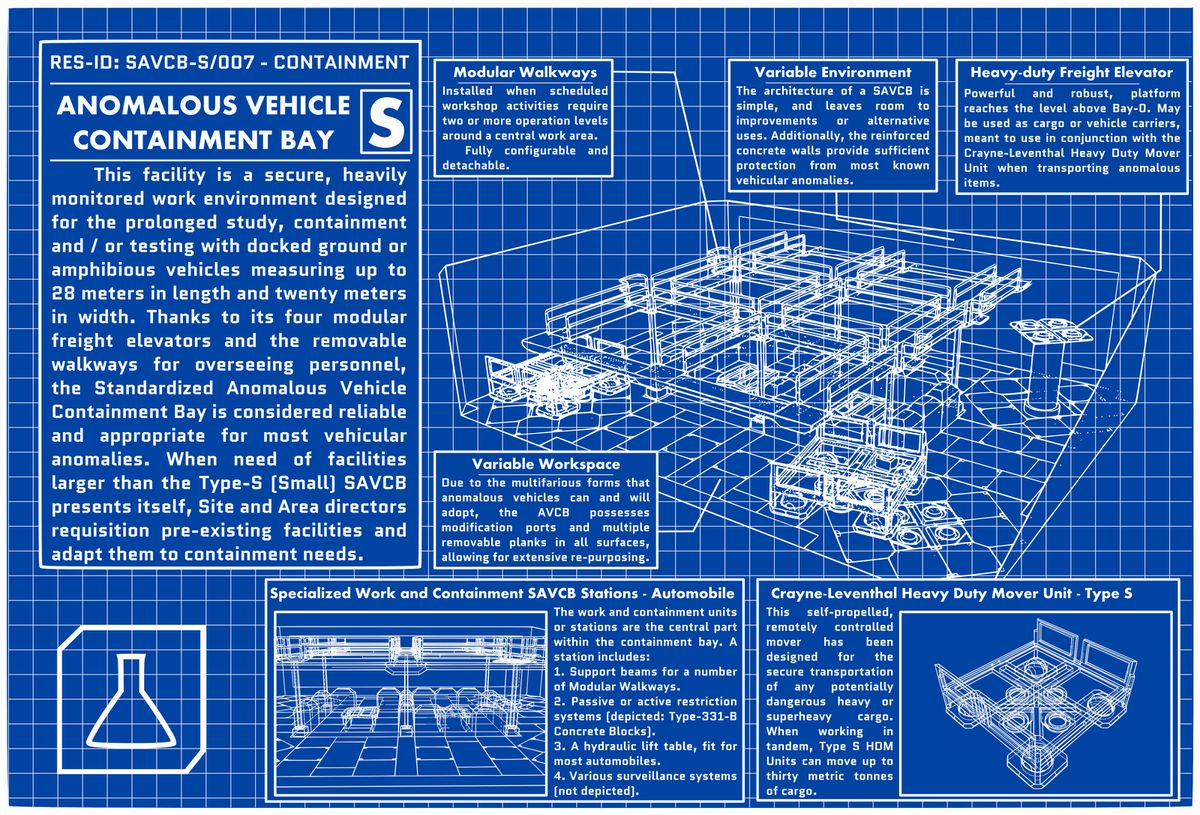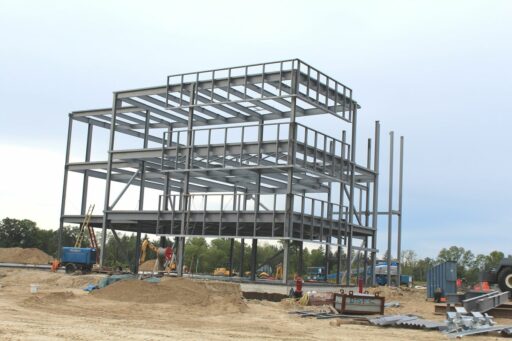In the construction industry, general contractors (GCs) play a pivotal role in bringing projects to life, managing everything from project oversight to financials. Understanding the typical markup that GCs apply to their services is crucial for anyone involved in construction, whether you’re a client, a subcontractor, or an aspiring contractor. This article delves into the nuances of general contractor markups and provides industry insights to help demystify the costs associated with hiring a GC.
Key Takeaways
- General contractors typically add a markup of 20-30% to cover their profit margins, which is standard practice to ensure they earn a living from their services.
- The role of a general contractor is multifaceted, including project management, coordination of labor, and financial oversight, which justifies the markup on their services.
- Accurate cost estimation and the use of construction takeoff software are essential for general contractors to quote prices effectively and manage project finances.
- Hiring a general contractor can greatly impact project success, but alternatives exist, such as hiring a construction manager, for those looking for a middle ground.
- Technological advancements, such as all-in-one remodeling software, are changing the landscape of construction management, improving efficiency and transparency.
The Role of General Contractors in Construction Projects

Project Management and Oversight
In the realm of construction, the general contractor is the linchpin that holds the project together through effective management and oversight. Project management encompasses a broad range of responsibilities, from the initial planning stages to the final touches of a build. These responsibilities include, but are not limited to, scheduling, ensuring quality control, and managing the many moving parts of a construction project.
Key aspects of project management and oversight:
- Scheduling and timeline coordination
- Quality control and inspections
- Managing subcontractors and labor
- Overseeing purchase orders and material acquisition
Effective project management is critical for maintaining the project’s momentum and ensuring that all components come together seamlessly. It requires a keen eye for detail and the ability to anticipate and mitigate potential issues before they escalate.
The general contractor must also maintain clear and consistent communication with all stakeholders, including clients, subcontractors, and team members. This communication is vital for the successful execution of a project, as it ensures that everyone is aligned with the project goals and aware of any changes or updates.
Coordination of Subcontractors and Labor
The coordination of subcontractors and labor is a pivotal aspect of a general contractor’s role. Effective management of these elements is crucial to the timely and successful completion of a construction project. This involves not only scheduling and overseeing the various trades but also ensuring that all parties are working in concert towards the project’s objectives.
The general contractor acts as the central point of communication, aligning the efforts of all subcontractors and labor to achieve a cohesive workflow.
Key responsibilities include managing subcontractors, handling inspections, and overseeing purchase orders. Here’s a brief overview of the tasks:
- Construction Procurement
- Purchase Order and Contract Management
- Bid Management (RFQ, RFP)
- Expediting
- Receiving and Accruals
- Vendor Invoice Matching
These responsibilities underscore the importance of a general contractor’s role in not only keeping the project on track but also in maintaining budgetary control. Hiring a general contractor in Mesa County, for instance, involves researching, evaluating credentials, and ensuring legal compliance. Effective communication and sustainable practices are key for successful construction projects.
Financial Management and Cost Control
Effective financial management and cost control are pivotal for the success of any construction project. General contractors must maintain a delicate balance between managing expenses and ensuring project quality. Budgeting and forecasting are foundational to this process, allowing for the anticipation of costs and the allocation of funds accordingly.
Key aspects of financial management include:
- Estimating
- Change order management
- Progress measurements
- Earned value management
Financial controls and accounting integration play a critical role in maintaining the fiscal health of a project. They ensure that all financial activities are tracked and managed efficiently, from customer billing to cash flow planning and reporting.
The table below summarizes the core components of financial management in construction:
| Financial Aspect | Description |
|---|---|
| Jobsite Cost Tracking | Monitoring of actual costs incurred on-site |
| Timesheets | Tracking of labor hours and associated costs |
| Resource and Rates Management | Management of materials, equipment, and rates |
| Document Management | Organization and control of project documents |
By implementing robust financial management practices, general contractors can mitigate risks, avoid cost overruns, and ultimately deliver projects that meet both their profit targets and client expectations.
Markup Strategies for General Contractors

Understanding the Standard Markup Range
In the construction industry, general contractors typically apply a markup to their costs to cover overhead and ensure profitability. The standard markup range can vary significantly, often influenced by factors such as project complexity, geographic location, and market conditions.
A general understanding of the typical markup percentages can be beneficial for both contractors and clients:
- 15-20% for residential projects
- 10-15% for commercial projects
- 5-10% for industrial projects
These ranges are not fixed and can fluctuate based on the specific circumstances of each project. Contractors must balance the need to remain competitive with the necessity of running a sustainable business.
It is crucial for contractors to communicate clearly with clients about the markup applied and the rationale behind it. This transparency helps build trust and can lead to more successful project outcomes.
Factors Influencing Markup Decisions
When general contractors determine their bid markup, several factors come into play. The number of bidders and the level of competitiveness in the market are critical considerations. A higher number of bidders often leads to more competitive pricing, which can influence the markup size a contractor is willing to apply.
- Market conditions: Economic trends and local market demand can sway markup percentages.
- Project complexity: More complex projects may require a higher markup to account for unforeseen issues.
- Company overhead: Fixed costs of running the business must be covered in the markup.
- Risk assessment: Potential risks associated with a project can justify an increased markup.
- Past performance: Contractors may adjust markups based on historical data and previous project outcomes.
Contractors must balance the need to remain profitable with the necessity to stay competitive. This delicate equilibrium is essential for securing contracts while ensuring a sustainable business model.
Balancing Profitability and Competitiveness
In the competitive landscape of construction, general contractors must find a delicate balance between profitability and competitiveness. While it’s crucial to maintain a healthy profit margin to ensure business sustainability, setting prices too high can drive away potential clients. Conversely, pricing too low in an attempt to win bids can lead to financial strain and compromise the quality of work.
To remain competitive, contractors must adopt strategic pricing that reflects the value of their services while also appealing to cost-conscious clients.
Understanding the market and the financial health of the business is essential. Contractors should analyze their profit margins and adjust their markup to its production or acquisition cost. This strategy ensures that the business covers its costs and generates a desired profit margin. For example, if the median profit margin is trending upwards, it may indicate an opportunity to adjust pricing strategies accordingly.
Here are some key considerations for balancing profitability and competitiveness:
- Regularly review financial statements to gauge profitability.
- Stay informed about industry trends and median profit margins.
- Implement cost-saving measures without compromising quality.
- Develop a unique selling proposition to differentiate from competitors.
Estimating Costs and Quoting in Construction
The Importance of Accurate Cost Estimation
Accurate cost estimation is the cornerstone of successful construction project management. The precision of these estimates directly influences the financial viability of a project. As the design documents evolve, so does the accuracy of the estimates, progressing from rough magnitude or feasibility estimates to more detailed preliminary and definitive ones.
Accurate estimates serve as a roadmap, guiding both the construction process and financial management. They are essential for establishing realistic budgets, securing appropriate financing, and ensuring profitability.
Understanding the different types of estimates and their respective accuracies is crucial. Here’s a brief overview:
- Magnitude Estimate: A rough approximation of costs.
- Feasibility Estimate: Determines if a project is financially viable.
- Preliminary Estimate: More detailed, based on preliminary design documents.
- Definitive Estimate: Highly accurate, based on complete design documents.
Navigating contractor estimates and bids involves understanding the estimate process, comparing bids carefully, considering overhead and operating costs, and evaluating factors like labor expenses, market demand, and contractor experience. A mere two or three inaccurate estimates can significantly impact a business’s bottom line.
Utilizing Construction Takeoff Software
In the realm of construction, construction takeoff software has become an indispensable tool for general contractors. By automating and streamlining the estimation process, these cloud-based solutions offer a significant boost in efficiency and accuracy. This technological leap allows contractors to handle more projects with confidence, knowing that their cost estimates are reliable and precise.
The integration of construction takeoff software into a contractor’s workflow can be a game-changer, especially for custom home builders. It not only saves time but also ensures that every material and labor cost is accounted for, reducing the risk of costly oversights.
Here’s a quick look at the benefits of using construction takeoff software:
- Speeds up the estimation process
- Enhances accuracy with automated calculations
- Facilitates better project management
- Improves customer communication
- Allows for more competitive quoting
Maximizing value through membership for general contractors involves strengthening business practices for success. Embracing efficiency through software adoption is recommended to focus on productivity and improve margins.
Developing and Presenting Comprehensive Quotes
Developing a comprehensive quote is a critical step in securing construction projects. First impressions can be pivotal, and a detailed, professional quote reflects the contractor’s expertise and reliability. A well-structured quote should include clear project scope, specifications, costs, and a realistic timeline. This not only helps in winning the job but also minimizes the risk of payment delays and disputes.
A building quote template enhances customer service by providing a consistent and clear format for presenting information.
To ensure accuracy and efficiency, many contractors are now turning to construction quoting software. These tools can expedite the quoting process, sometimes up to five times faster, allowing for more time to be spent on project management and customer communication. Below is a list of essential elements to include in a quote:
- Detailed description of the work to be performed
- Breakdown of materials and labor costs
- Projected timeline for completion
- Payment terms and conditions
- Any exclusions or potential additional costs
By presenting a comprehensive quote, contractors demonstrate their commitment to transparency and set the stage for a successful partnership with homeowners.
Navigating the Pros and Cons of Hiring a General Contractor

Expertise Versus DIY: Making the Right Choice
When embarking on a construction project, homeowners are often faced with the decision of hiring a general contractor (GC) or taking a DIY approach. The choice hinges on a balance between cost savings, control, and the complexity of the project.
-
Pros of DIY:
- Cost savings on contractor fees
- Direct control over the project
- Personal satisfaction from hands-on involvement
-
Cons of DIY:
- Potential for costly mistakes
- Increased time commitment
- Stress of managing multiple subcontractors
While DIY can offer a sense of pride and potential cost savings, it also requires a significant investment of time and effort. Homeowners must be prepared for the challenges that come with managing a construction project without professional expertise.
Ultimately, the decision to hire a GC or opt for DIY should be based on a thorough assessment of the homeowner’s skills, resources, and the demands of the project. A general contractor brings expertise, efficiency, and peace of mind, but at a cost. DIY, while potentially more economical, carries the risk of unexpected complications and extended timelines.
The Impact of General Contractors on Project Success
The success of a construction project often hinges on the expertise and management skills of the general contractor (GC). A skilled GC can significantly elevate the project’s outcome, ensuring that the vision is realized while managing the myriad of details that come with construction. They are the linchpin that holds the various elements of the project together, from coordinating subcontractors to ensuring quality control.
General contractors bring a level of professionalism and peace of mind to a project that is difficult to achieve when managing renovations independently.
Hiring a general contractor can alleviate burdens and streamline your projects. They handle the complexities of project management, reducing the risk, liability, and hassle for the property owner. This can include resolving disputes, managing deliveries, and addressing any unforeseen issues that arise during construction. The table below outlines some of the key benefits and considerations when deciding to hire a GC:
| Benefit | Consideration |
|---|---|
| Expert project management | Cost of services |
| Reduced liability | Potential loss of control |
| Quality assurance | Finding the right contractor |
While there are undeniable advantages to having a GC, it’s important to weigh these against the potential drawbacks. Some property owners may feel they are relinquishing too much control or may be concerned about the costs involved. However, the expertise a GC brings to a project can be invaluable, particularly in complex or large-scale renovations.
Alternatives to Traditional General Contracting
Exploring alternatives to traditional general contracting can offer a middle ground for those who are hesitant to fully commit to either hiring a general contractor or managing a construction project on their own. One such alternative is the engagement of a construction manager who can assist with specific tasks like permit applications and invoice management, providing support where it’s most needed.
For homeowners willing to take on the role of their own general contractor, there are benefits to be had:
- Direct control over the project, allowing for immediate resolution of issues.
- Potential savings on general contractor fees.
- More personal involvement in the construction process.
However, it’s important to weigh these advantages against the potential drawbacks:
- Increased responsibility and time commitment.
- The need to navigate permits and regulations without professional guidance.
- The risk of mismanaging subcontractors and project timelines.
While the autonomy of managing your own project can be appealing, it’s crucial to assess whether the benefits outweigh the challenges and responsibilities that come with forgoing professional general contracting services.
Technological Advancements in Construction Management

The Rise of All-in-One Remodeling Software
The advent of all-in-one remodeling software has revolutionized the way builders and remodelers manage construction projects. These comprehensive platforms integrate various aspects of project management, from initial estimates to final invoicing, streamlining the entire construction process.
- Modern software solutions, like Buildxact, offer user-friendly interfaces tailored for small to medium-sized construction businesses.
- They facilitate increased collaboration between builders, remodelers, and dealers, enhancing overall project efficiency.
- Digital takeoff tools within these platforms allow for faster and more accurate material counting, which is crucial for protecting profitability.
The integration of estimating and project management tools in a single software package has made it easier for contractors to maintain control over their projects, ensuring that each phase is executed with precision and efficiency.
Choosing the right all-in-one software is a critical decision for contractors aiming to stay competitive in the residential construction industry. It’s not just about the features; it’s about finding a system that aligns with the company’s workflow and enhances its operational capabilities.
Choosing the Right Takeoff Tool for Profitability
In the competitive landscape of construction, choosing the right takeoff tool is crucial for profitability. Cloud-based construction takeoff software, like Buildxact, has revolutionized the estimation process, offering speed without sacrificing top-notch accuracy. This accuracy is vital for custom home builders who aim to improve their bottom line and expand their capacity for more projects.
Estimating software automates complex formulas, transforming what was once a manual spreadsheet task into a streamlined process. The right software not only saves time but also ensures that custom quotes are precise, which is essential for running a profitable business.
By maximizing the efficiency of the takeoff process, contractors can focus on other critical aspects of their business, such as marketing strategies and financial management, to ensure they are reaching their profitability goals.
It’s important to recognize that not all takeoff tools are created equal. Here’s a quick checklist to consider when selecting a takeoff tool:
- Does it offer cloud-based accessibility?
- Is it user-friendly and easy to learn?
- Can it integrate with other construction management software?
- Does it provide real-time updates and accurate cost data?
Selecting the right tool is a strategic decision that can lead to more accurate estimates, better time management, and ultimately, a more robust bottom line.
Improving Customer Communication and Project Transparency
In the construction industry, effective communication and transparency are paramount to maintaining trust and satisfaction among clients. Technological advancements have paved the way for tools that enhance these aspects significantly.
For instance, modern software solutions offer features such as:
- Centralized communication hubs that keep all project-related discussions in one place.
- Personalized and professional document generation for proposals and other client interactions.
- Seamless integration with accounting software to simplify the invoicing process.
Embracing these tools not only streamlines project management but also ensures that clients are well-informed and engaged throughout the construction process.
By implementing such technologies, general contractors can provide a more transparent view of the project’s progress and budget, leading to improved client relationships and potentially more business opportunities.
Conclusion
Navigating the financial landscape of general contracting can be complex, but understanding the typical markup is essential for both clients and contractors. A markup of 20-30% is standard in the industry, reflecting the need for contractors to cover expenses and earn a profit. While this additional cost may encourage some to consider managing their projects, it’s important to weigh the expertise and efficiency a professional contractor brings to the table. The decision to hire a general contractor or take on the role oneself should be informed by a thorough evaluation of one’s own skills, the complexity of the project, and the potential benefits of professional management. Ultimately, whether you choose to hire a GC or manage the project independently, being informed about the costs and processes involved will lead to better outcomes and a smoother construction experience.
Frequently Asked Questions
What typical markup do general contractors add to their costs?
General contractors typically add a markup of around 20-30% to the cost of materials and labor to make a profit.
What are the main roles of a general contractor in a construction project?
A general contractor is responsible for project management and oversight, coordination of subcontractors and labor, and financial management and cost control.
How do general contractors estimate costs and provide quotes?
Contractors accurately estimate costs per unit for each item and apply a markup to determine the quoted price. They may use construction takeoff software to generate accurate estimates faster.
What are the benefits of hiring a general contractor over DIY project management?
Hiring a general contractor brings expertise, project success, and management of complex aspects of construction that might be challenging for a DIY approach.
What alternatives are there to hiring a traditional general contractor?
Alternatives include hiring a construction manager to assist with certain aspects of the project, or using modern all-in-one remodeling software to manage the job yourself.
How can technological advancements improve construction management?
Technological advancements like all-in-one remodeling software and construction takeoff tools can improve project management, customer communication, and ensure project transparency.





